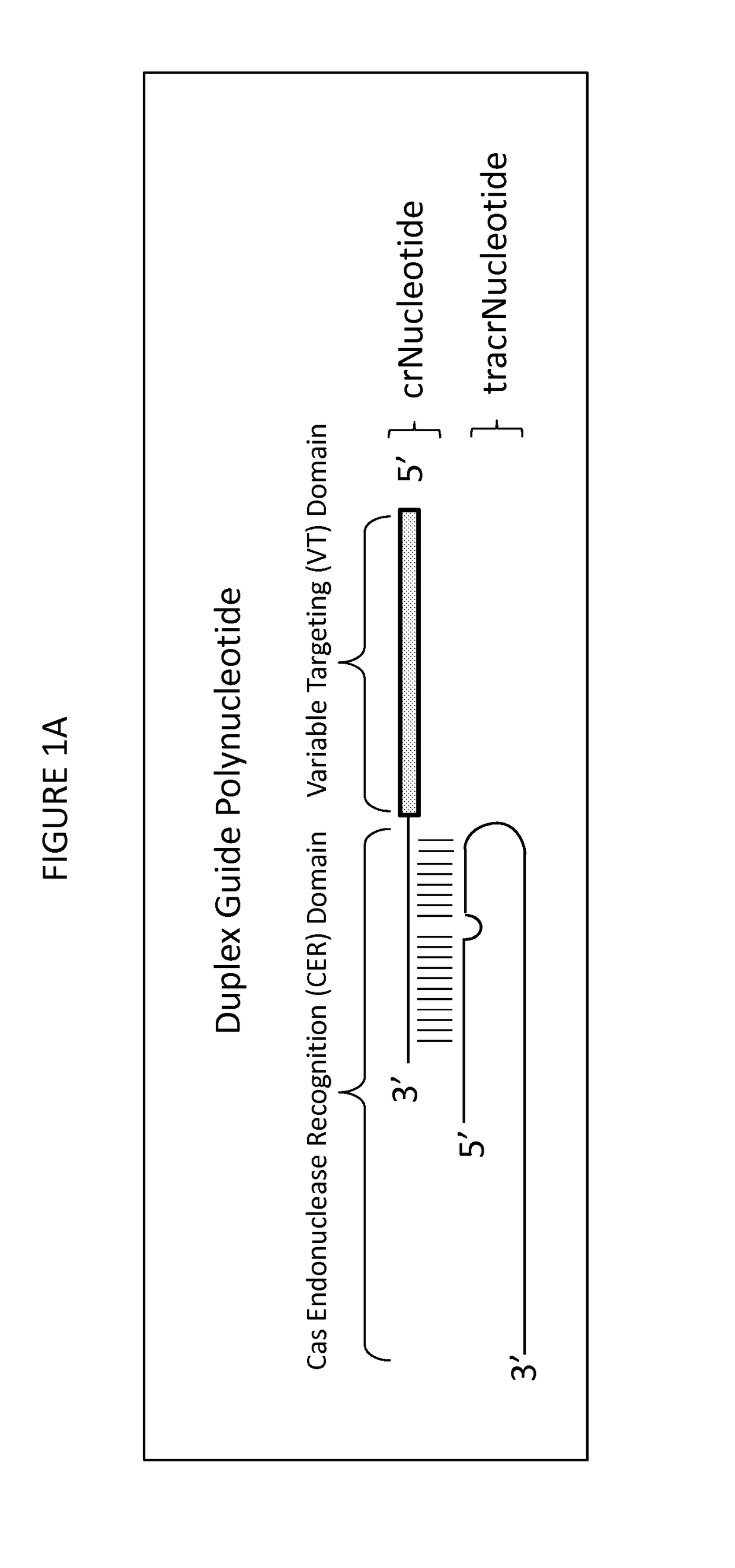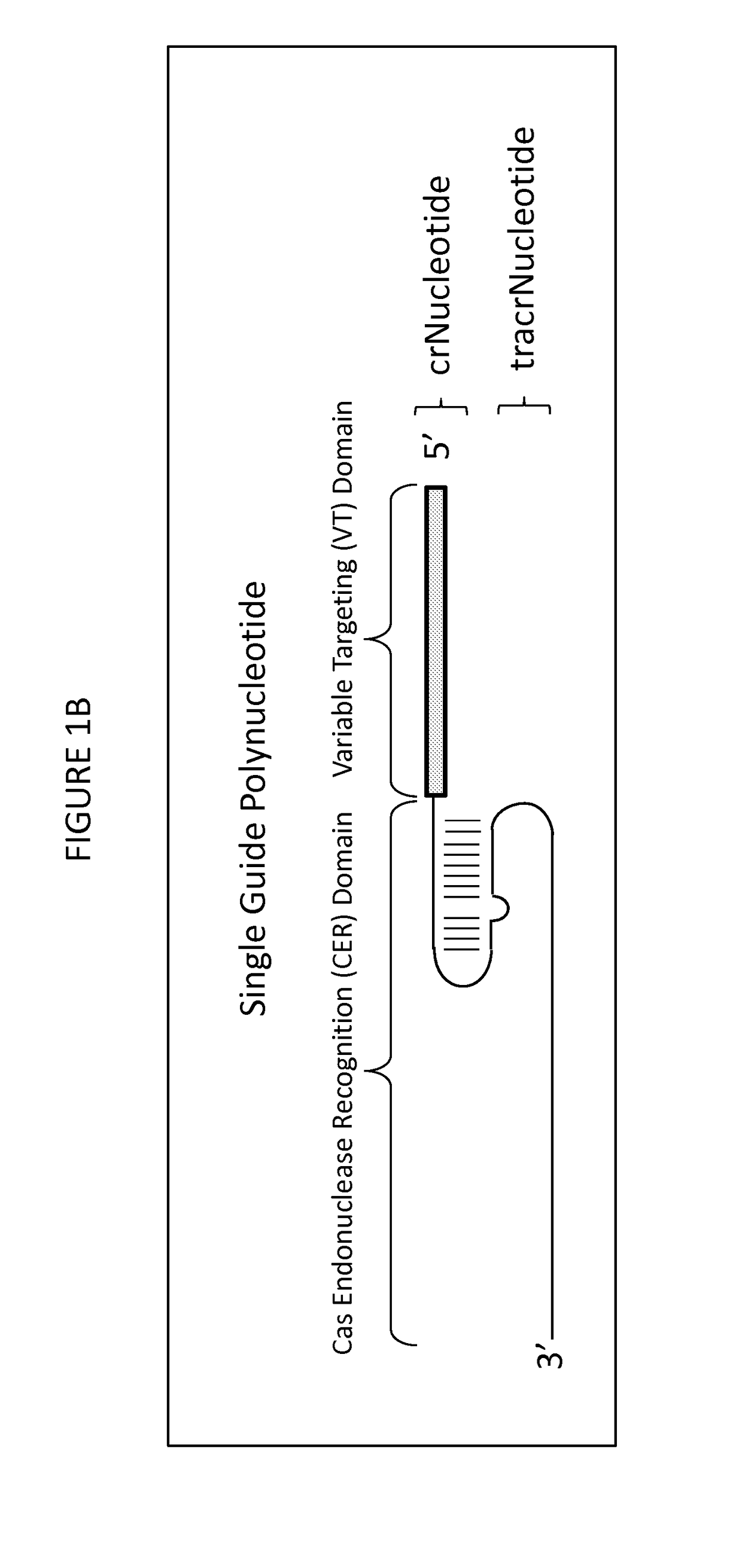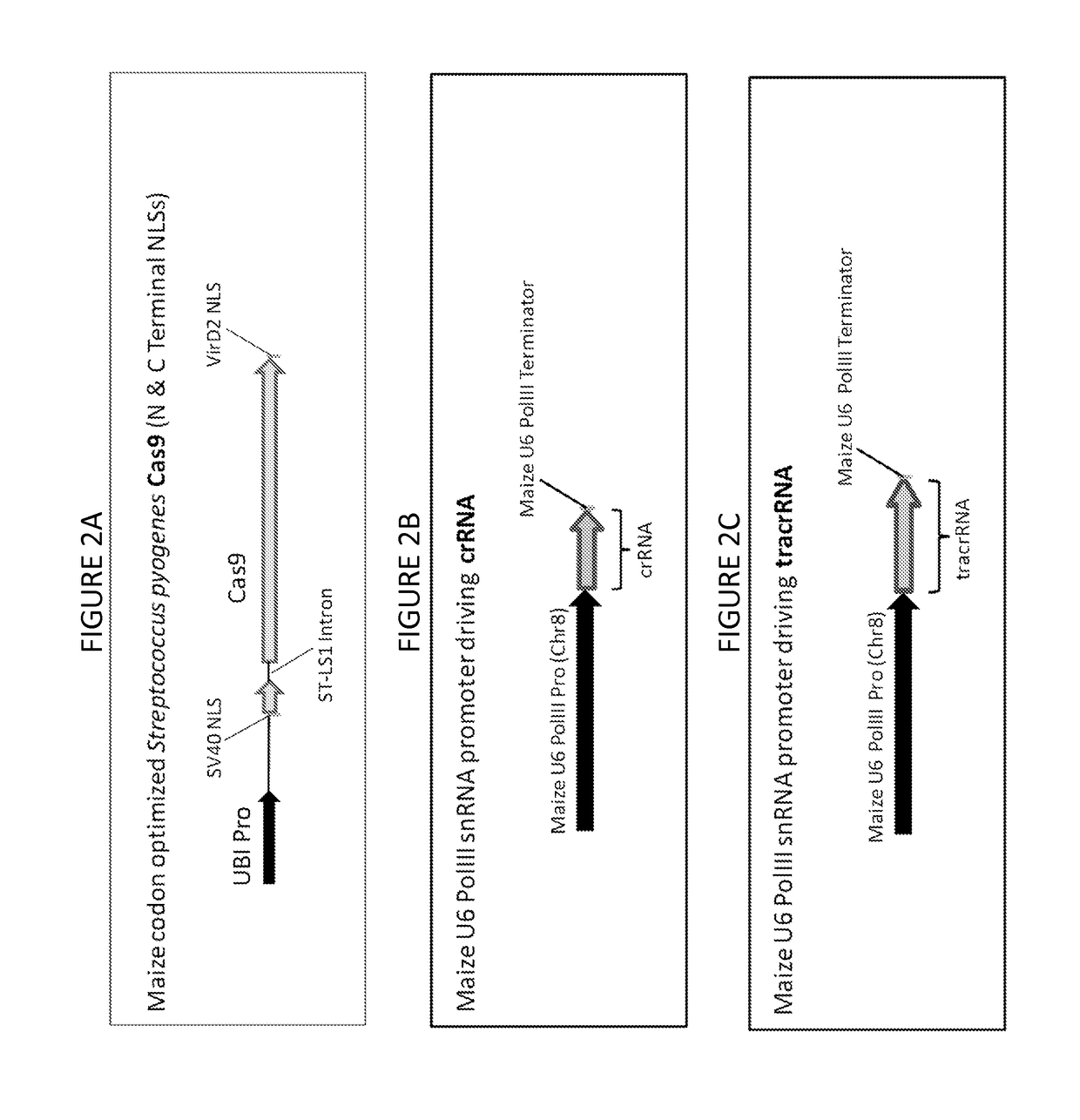Compositions and methods for producing plants resistant to glyphosate herbicide
a technology of glyphosate and herbicide resistance, applied in the field of molecular biology, can solve the problem that epsps variants are not effective enzymes for plants, and achieve the effect of reducing the number of glyphosate variants
- Summary
- Abstract
- Description
- Claims
- Application Information
AI Technical Summary
Benefits of technology
Problems solved by technology
Method used
Image
Examples
example 1
Expression Cassettes for Guide RNA / Cas Endonuclease Based Genome Modification in Maize Plants
[0371]Described herein is a guide RNA / Cas endonuclease system that is based on the type II CRISPR / Cas system and includes a Cas endonuclease and a guide RNA (or duplexed crRNA and tracrRNA) that together can form a complex that recognizes a genomic target site in a plant and introduces a double-strand-break into said target site (U.S. patent application 61 / 868,706, filed Aug. 22, 2013).
[0372]To test the guide RNA / Cas endonuclease system in maize, the Cas9 gene from Streptococcus pyogenes M1 GAS (SF370) (SEQ ID NO: 1) was maize codon optimized per standard techniques known in the art and the potato ST-LS1 intron (SEQ ID NO: 2) was introduced in order to eliminate its expression in E. coli and Agrobacterium (FIG. 1 A). To facilitate nuclear localization of the Cas9 protein in maize cells, Simian virus 40 (SV40) monopartite amino terminal nuclear localization signal (MAPKKKRKV, SEQ ID NO: 3) an...
example 2
The Guide RNA / Cas Endonuclease System Cleaves Chromosomal DNA in Maize and Introduces Mutations by Non-Homologous End-Joining
[0377]To test whether the maize optimized guide RNA / Cas endonuclease described in example 1 could recognize, cleave, and mutate a maize EPSPS gene through non-homologous end-joining (NHEJ) repair pathways, three different genomic target sequences in the maize epsps locus were targeted for cleavage (see Table 1) and examined by deep sequencing for the presence of NHEJ mutations.
TABLE 1Maize genomic target sites targeted by a singleguide RNA / Cas endonuclease system.SEQTarget SiteMaize Genomic Target SitePAMIDLocusLocationDesignationSequenceSequenceNO:EPSPSChr. 9:EPSPSCas-1GGAATGCTGGAACTGCAATGCGG1269.43 cMEPSPSCas-2GCAGCTCTTCTTGGGGAATGCTGG13EPSPSCas-3GCAGTAACAGCTGCTGTCAATGG14EPSPS = Enolpyruvylshikimate Phosphate Synthase Gene
[0378]The maize optimized Cas9 endonuclease and single guide RNA expression cassettes containing the specific maize variable targeting doma...
example 3
The Guide RNA / Cas Endonuclease System Delivers Double-Strand Breaks (DBSs) to the Maize Epsps Locus Resulting in Desired Point Mutations
[0383]Two maize optimized Cas9 endonucleases were developed and evaluated for their ability to introduce a double-strand break at a genomic target sequence. A first Cas9 endonuclease was as described in FIG. 2A (Example 1 and expression cassette SEQ ID NO:5). A second maize optimized Cas9 endonuclease (moCas9 endonuclease; SEQ ID NO:22 (protein) and 23 (DNA)) was supplemented with the SV40 nuclear localization signal by adding it to the 5′ end of the moCas9 coding sequence (FIG. 5). The plant moCas9 expression cassette was subsequently modified by the insertion of the ST-LS1 intron into the moCas9 coding sequence in order to enhance its expression in maize cells and to eliminate its expression in E. coli and Agrobacterium. The maize ubiquitin promoter and the potato proteinase inhibitor II gene terminator sequences complemented the moCas9 endonuclea...
PUM
| Property | Measurement | Unit |
|---|---|---|
| pH | aaaaa | aaaaa |
| pH | aaaaa | aaaaa |
| pH | aaaaa | aaaaa |
Abstract
Description
Claims
Application Information
 Login to View More
Login to View More - R&D
- Intellectual Property
- Life Sciences
- Materials
- Tech Scout
- Unparalleled Data Quality
- Higher Quality Content
- 60% Fewer Hallucinations
Browse by: Latest US Patents, China's latest patents, Technical Efficacy Thesaurus, Application Domain, Technology Topic, Popular Technical Reports.
© 2025 PatSnap. All rights reserved.Legal|Privacy policy|Modern Slavery Act Transparency Statement|Sitemap|About US| Contact US: help@patsnap.com



